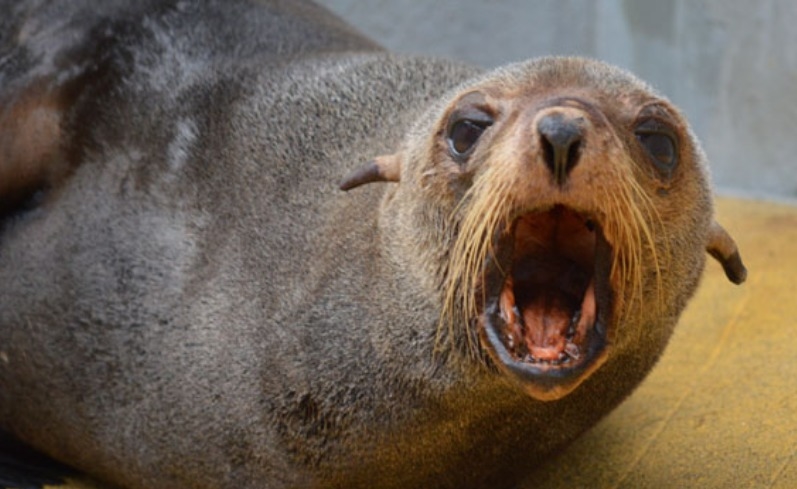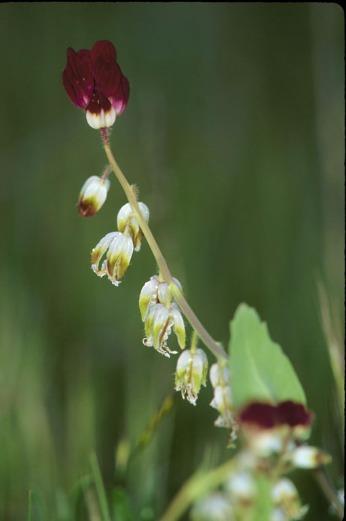Oliver's Brief:
The Dwarf Wedgemussel (Alasmidonta Heterodon) is an endangered small bivalve mussel that lives in freshwater rivers scattered throughout the northeastern United States. The mussels rely on one of 3 three species of fish to help them grow to maturity by carrying their eggs. The male mussel will launch its sperm downstream, to be caught by the female. After many months the female will hold the larvae [glochidia] in its gills. When the mussel feels a fish on top of it launches the glochidia onto the mussels face[explain the lifecycle here]. [explain here: One of these species is the mottled sculpin.] Since waterways have gotten blocked off and/or they have gotten heavily polluted, the fish have abandoned their old routes for cleaner and more easily traversable routes away from the mussels. This has caused an even greater decline in their populations in the past few decades. The Mus-Bus provides a substitute for the fish, giving the mussels the final step in their maturing stage back. Our project uses tiny motors to propel a fake duck forward and to allow the model fish at the bottom to seem like it is swimming by the mussel habitats, hopefully picking up the larvae, also known as the glochidia. The mussel will launch its larvae into the river when it detects a fish swimming directly above it. The mussel deploys a fleshy lure, and when the fish swims above it and comes in contact with the lure the mussel shoots the glochidia onto the fish, where they attach to the scales using tiny hooks. The project uses sonar and servos to raise and lower a tiny model mottled sculpin that attempts to imitate its real-life counterpart as it is designed to be convincing enough that mussels will put their glochidia on it.
By working to save this species, the Mus-Bus upholds biodiversity, which is necessary for balance in the ecosystem. It prevents other, potentially invasive, species from acquiring too strong a grasp on the environment. It raises interesting questions and hopefully provides an answer about how other species will react to imitations of life, and if whether they would shun them or believe in them. By finding an answer to this it could speak about nature overcoming the ‘uncanny valley’, the feeling of discomfort humans have when they see an eerily lifelike replica of a human being. This could show how animals react to different species and whether or not the mussel specifically has a similar ability to recognize specific species of fish. Biologists, both professional and amateur, can use the project to study the behavior of the Dwarf Wedgemussel and its ability to recognize different species of fish. Our project uses tiny motors to propel a fake duck forward and to allow the model fish at the bottom to seem like it is swimming by the mussel habitats, hopefully picking up the larvae, also known as the glochidia. The mussel will launch its larvae into the river when it detects a fish swimming directly above it. The mussel deploys a fleshy lure, and when the fish swims above it and comes in contact with the lure the mussel shoots the glochidia onto the fish, where they attach to the scales using tiny hooks. The project uses sonar and servos to raise and lower a tiny model mottled sculpin that attempts to imitate its real-life counterpart as it is designed to be convincing enough that mussels will put their glochidia on it. Once the user deploys it in the water upstream from the mussel population in late April or early May they let it be and at the end of July use the embedded GPS to find and retrieve the duck with the fish attached. Other than that it is completely autonomous.
Tinna's Brief:
Pollution from industry and agriculture, and manmade structures, like dams, are endangering the Dwarf Wedgemussel by limiting the number of fish in the mussels' natural habitats. During the Dwarf Wedgemussels’ reproduction cycle the mussel relies on the fish to provide a safe environment for the mussel larvae to develop. The reproduction cycle of the Dwarf Wedge mussel is: the female mussels launch the mussel larvae on to fish and the mussel larvae attach to the fins or gills of that fish. As they develop they stay on the fish until they become juvenile mussels. At that point, they let go and fall to the bottom of the river and keep developing into adult mussels. With this in mind, the Mus-bus aims to help the mussels reproduce by providing an artificial substitute for the fish.
The Mus-bus has two parts: a) an artificial fish made out of silicone and b) a hollow wooden duck. All the mechanics are stored inside the duck, i.e., the motor that activates the webbed feet that propel the duck forward; the reel; and the line that attaches to the fish. A GPS device ensures that the duck doesn't get lost and a sonar that determines the length of the line to keep the fish at the right depth. All the mechanical parts are powered by a battery pack that is inside the duck. The objective of the Mus-bus is to make the Dwarf Wedgemussel no longer an endangered species, Because if the Dwarf Wedgemussel disappears it will have a rippling effect on the ecosystem and other species. For an example, if the mussels go extinct algae will build up and lower the oxygen level in the water which could kill fish which would lead to food shortage which will affect us and other species. This shows that it is important to maintain a balanced and diverse ecosystem and the first step is to protect all species no matter how big or small because we all serve an important role on this earth.
:rotate(0)/ocqhdqvzxqpijam8trhjg89exb2d)
:rotate(0)/ex7oty9suqasepo7q28m8jpzgc2m)
:rotate(0)/erb3uv9r8tom3wtswsodal47kmy0)

 The Guadalupe Fur Seal was a species that was hunted especially for their fur. Their fur would be used in trades for warmth and clothing. This caused the Guadalupe Fur Seal population to dramatically decrease.
The Guadalupe Fur Seal was a species that was hunted especially for their fur. Their fur would be used in trades for warmth and clothing. This caused the Guadalupe Fur Seal population to dramatically decrease.

:rotate(0)/4vak3w14u05cp2adek22clelc2ua)